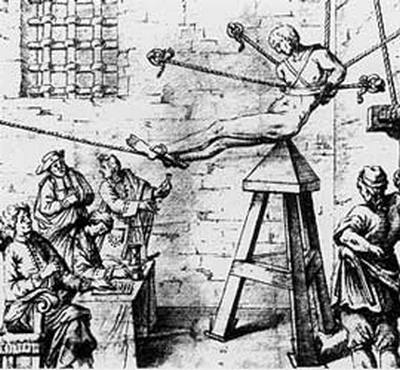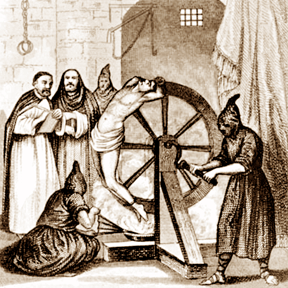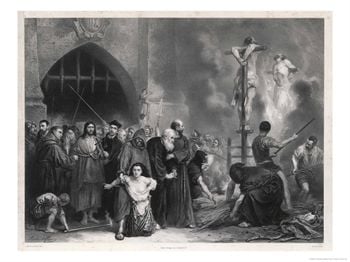By: Shevlin Sebastian
It was midnight. Fr Jose George could not sleep because there was no fan in his room. Jose knocked on Anna Jacob’s door. When she opened it, he told her he could not sleep. She invited him inside, because there was a fan.
Jose had met Anna while conducting a retreat at Kottayam. “Why don’t you come home, have dinner, and stay the night?” Anna said. She lived with her mother-in-law, while her husband worked in Dubai. Jose accepted the offer.
When Jose entered the bedroom, Anna’s mother-in-law noticed. “She prayed till morning,” says Fr K P Shibu Kalamparambil. “She cannot speak about this incident to her son, because that will destroy the marriage.
Then society will ask questions about why it happened. That would affect the family’s social standing.” So she kept quiet. But the secret came out when she told Shibu at the confessional.
(Every Sunday, Catholics can confess their sins to the priest before Mass. They communicate through a grid or lattice).
The advantage priests have is that when they go to the house of a woman, society does not look askance, according to Shibu. “He has the social sanction. And priests take advantage of that.”
Shibu was a priest with the Vincentian order till March this year. Like Sr Jesme, he quit the priesthood and has written a 160-page book, Here is the Heart of a Priest, in which he talks about his experiences during his 24 years in the congregation. The most stunning revelations are the incidents of sexual misconduct.
“If a woman has financial problems and is desperate, she will approach the priest,” says Shibu. “He will help her, but ask for sex in exchange. She gives in because she has no option.” Similarly, priests take advantage of widows, troubled women, and nuns.
“Most nuns are sexually frustrated,” says Shibu. “To lead a celibate life is unnatural.” Initially, they try to leave. But the older nuns persuade them that it’s not necessary, because things will get better in the future.
“Since the elder nuns are trapped, they want to ensure that others also remain like them,” says Shibu. “Nobody is allowed to escape.”
So the young nuns look for safe ways to have sex. “It is either through priests, servants, drivers, or the milkman,” says Shibu. “There are cases of nuns caught red-handed, but the matter is quickly hushed up. And the nun is transferred immediately.”
In the priestly life, sexual misconduct starts early. “Sexual abuse is rampant in the seminaries,” says Shibu. Since it is a dormitory system, it is easy for a boy to manipulate or exploit another boy for sex.
“They have no other forms of entertainment, like watching films,” he says. “Neither do they have any contact with the opposite sex.”
Shibu, who was a prefect in a seminary, has caught students in the act many times. “They are immediately sent away,” he says. “Sometimes, a few boys escape being caught and carry on their activities long after they have become priests.”
Apart from sex, money is a big attraction. “Nobody knows how much donation a priest receives in the name of helping the poor,” says Shibu. “The priest also gets cash gifts from parishioners after he blesses a new car or a home. The money can range from Rs 500 to Rs 1 lakh.”
He remembers the case of a businessman who gave Rs 1 lakh to a priest because he had conducted the baptism ceremony of his son. “The priest kept the money instead of giving it to the congregation,” says Shibu. Usually, they buy electronic goods, a car, insurance policies, or invest in shares and real estate.
“Priests are so busy making money, that being a priest has become a secondary role,” he says. “But I heard allegations that the same thing is happening among pujaris and maulvis. I feel disheartened.”
But there were other reasons why Fr Shibu decided to quit. He had an MA in Sociology from the University of Pune, MEd from the Mahatma Gandhi University, Kottayam, but was not given jobs commensurate with his qualifications. “The authorities wanted loyalists. They will not promote the meritorious, because they are afraid their positions could get shaky.”
So he had to face the humiliation of seeing juniors appointed principals, while he was given a job as a teacher.
The priests in his congregation are aware of what is happening, but are afraid to speak out. “I thought to myself, ‘Why should I remain silent’?” he says.
“I joined the priesthood because I wanted to serve God and serve humanity. But I was unable to do so. If I wanted I could have made a lot of money and led a very comfortable life. But I know that these compromises will prick at my conscience. So I thought it was better to quit.”
Shibu also admits that there are blessings in the priestly life. “The vocation gives peace of mind, provided one is working in a spiritual environment,” he says.
“Then a person is inspired to work for the betterment of society. Priests in many congregations lead dedicated lives, but there is a certain section, very large in number, which is spoiling the name of the priesthood.”
Asked whether celibacy should be abolished, he nods. “In order to serve God, there is no need to remain unmarried,” he says. “The disciples of Jesus Christ, except John, were married.
The first Pope was married and had three children. My suggestion is that the Pope and priests should marry. Celibacy forces priests to succumb to temptations.”
He said Christian sects like the Mar Thomites and Jacobites allow priests to marry. “They are respected by society,” he says. “So why can’t the Catholic church do the same thing?”
But this insistence on celibacy by the Catholic church could be based on economic considerations. “If there is a married priest, the church would need to give higher salaries and better accommodation,” says Shibu. “The senior clergy will not have the money for the lush lifestyles they have now.”
Not surprisingly, there are those that do not agree with Shibu. Fr Paul Puthuva, one of the Provincial Superiors of the Vincentian Congregation, says, “The book is full of baseless allegations. Any person who leaves the congregation can level all sorts of unfounded charges. So we prefer not to respond to what Shibu has said or written.”
In person, Shibu comes across as straight-forward and intense, but under mental strain. A person close to him, but who does not wish to be identified, says he is under a lot of pressure from the Vincentians and also his own family, who are devout Catholics. They are displeased with him for writing the book and talking to the media. So, Shibu left.
He now works as a teacher of social science in an Indian school at Doha, Qatar. Shibu himself admits that the road ahead is tough. “But I have courage, determination, and the will to succeed,” he says.
His future plans include marriage and setting up a short-stay home for priests who want to leave the priesthood. “Initially, when they leave, they are not accepted by family or society,” says Shibu.
“They go through a tough time. I will provide a room, with an attached bath, as well as a kitchen. A job will also be arranged.”
Asked whether Sr Jesme served as an inspiration, Shibu says, “Yes, her example was an impetus. What Jesme said is the truth, but it has not been accepted by the church. But there is one thing I can say with certainty: truth cannot be concealed forever. One day it will come out.”
Source: Haindavakeralam
It was midnight. Fr Jose George could not sleep because there was no fan in his room. Jose knocked on Anna Jacob’s door. When she opened it, he told her he could not sleep. She invited him inside, because there was a fan.
Jose had met Anna while conducting a retreat at Kottayam. “Why don’t you come home, have dinner, and stay the night?” Anna said. She lived with her mother-in-law, while her husband worked in Dubai. Jose accepted the offer.
When Jose entered the bedroom, Anna’s mother-in-law noticed. “She prayed till morning,” says Fr K P Shibu Kalamparambil. “She cannot speak about this incident to her son, because that will destroy the marriage.
Then society will ask questions about why it happened. That would affect the family’s social standing.” So she kept quiet. But the secret came out when she told Shibu at the confessional.
(Every Sunday, Catholics can confess their sins to the priest before Mass. They communicate through a grid or lattice).
The advantage priests have is that when they go to the house of a woman, society does not look askance, according to Shibu. “He has the social sanction. And priests take advantage of that.”
Shibu was a priest with the Vincentian order till March this year. Like Sr Jesme, he quit the priesthood and has written a 160-page book, Here is the Heart of a Priest, in which he talks about his experiences during his 24 years in the congregation. The most stunning revelations are the incidents of sexual misconduct.
“If a woman has financial problems and is desperate, she will approach the priest,” says Shibu. “He will help her, but ask for sex in exchange. She gives in because she has no option.” Similarly, priests take advantage of widows, troubled women, and nuns.
“Most nuns are sexually frustrated,” says Shibu. “To lead a celibate life is unnatural.” Initially, they try to leave. But the older nuns persuade them that it’s not necessary, because things will get better in the future.
“Since the elder nuns are trapped, they want to ensure that others also remain like them,” says Shibu. “Nobody is allowed to escape.”
So the young nuns look for safe ways to have sex. “It is either through priests, servants, drivers, or the milkman,” says Shibu. “There are cases of nuns caught red-handed, but the matter is quickly hushed up. And the nun is transferred immediately.”
In the priestly life, sexual misconduct starts early. “Sexual abuse is rampant in the seminaries,” says Shibu. Since it is a dormitory system, it is easy for a boy to manipulate or exploit another boy for sex.
“They have no other forms of entertainment, like watching films,” he says. “Neither do they have any contact with the opposite sex.”
Shibu, who was a prefect in a seminary, has caught students in the act many times. “They are immediately sent away,” he says. “Sometimes, a few boys escape being caught and carry on their activities long after they have become priests.”
Apart from sex, money is a big attraction. “Nobody knows how much donation a priest receives in the name of helping the poor,” says Shibu. “The priest also gets cash gifts from parishioners after he blesses a new car or a home. The money can range from Rs 500 to Rs 1 lakh.”
He remembers the case of a businessman who gave Rs 1 lakh to a priest because he had conducted the baptism ceremony of his son. “The priest kept the money instead of giving it to the congregation,” says Shibu. Usually, they buy electronic goods, a car, insurance policies, or invest in shares and real estate.
“Priests are so busy making money, that being a priest has become a secondary role,” he says. “But I heard allegations that the same thing is happening among pujaris and maulvis. I feel disheartened.”
But there were other reasons why Fr Shibu decided to quit. He had an MA in Sociology from the University of Pune, MEd from the Mahatma Gandhi University, Kottayam, but was not given jobs commensurate with his qualifications. “The authorities wanted loyalists. They will not promote the meritorious, because they are afraid their positions could get shaky.”
So he had to face the humiliation of seeing juniors appointed principals, while he was given a job as a teacher.
The priests in his congregation are aware of what is happening, but are afraid to speak out. “I thought to myself, ‘Why should I remain silent’?” he says.
“I joined the priesthood because I wanted to serve God and serve humanity. But I was unable to do so. If I wanted I could have made a lot of money and led a very comfortable life. But I know that these compromises will prick at my conscience. So I thought it was better to quit.”
Shibu also admits that there are blessings in the priestly life. “The vocation gives peace of mind, provided one is working in a spiritual environment,” he says.
“Then a person is inspired to work for the betterment of society. Priests in many congregations lead dedicated lives, but there is a certain section, very large in number, which is spoiling the name of the priesthood.”
Asked whether celibacy should be abolished, he nods. “In order to serve God, there is no need to remain unmarried,” he says. “The disciples of Jesus Christ, except John, were married.
The first Pope was married and had three children. My suggestion is that the Pope and priests should marry. Celibacy forces priests to succumb to temptations.”
He said Christian sects like the Mar Thomites and Jacobites allow priests to marry. “They are respected by society,” he says. “So why can’t the Catholic church do the same thing?”
But this insistence on celibacy by the Catholic church could be based on economic considerations. “If there is a married priest, the church would need to give higher salaries and better accommodation,” says Shibu. “The senior clergy will not have the money for the lush lifestyles they have now.”
Not surprisingly, there are those that do not agree with Shibu. Fr Paul Puthuva, one of the Provincial Superiors of the Vincentian Congregation, says, “The book is full of baseless allegations. Any person who leaves the congregation can level all sorts of unfounded charges. So we prefer not to respond to what Shibu has said or written.”
In person, Shibu comes across as straight-forward and intense, but under mental strain. A person close to him, but who does not wish to be identified, says he is under a lot of pressure from the Vincentians and also his own family, who are devout Catholics. They are displeased with him for writing the book and talking to the media. So, Shibu left.
He now works as a teacher of social science in an Indian school at Doha, Qatar. Shibu himself admits that the road ahead is tough. “But I have courage, determination, and the will to succeed,” he says.
His future plans include marriage and setting up a short-stay home for priests who want to leave the priesthood. “Initially, when they leave, they are not accepted by family or society,” says Shibu.
“They go through a tough time. I will provide a room, with an attached bath, as well as a kitchen. A job will also be arranged.”
Asked whether Sr Jesme served as an inspiration, Shibu says, “Yes, her example was an impetus. What Jesme said is the truth, but it has not been accepted by the church. But there is one thing I can say with certainty: truth cannot be concealed forever. One day it will come out.”
Source: Haindavakeralam
.jpg)






 Manpreet Romana for The New York TimesA Manipuri woman arguing with an Indian army official in Gamgiphai village of Manipur, in this file photo from August 31, 2011.
Manpreet Romana for The New York TimesA Manipuri woman arguing with an Indian army official in Gamgiphai village of Manipur, in this file photo from August 31, 2011.










